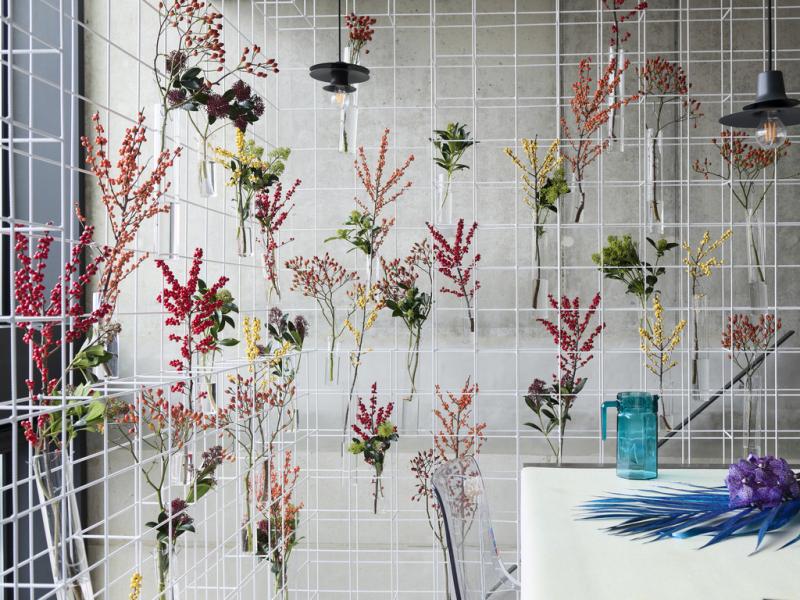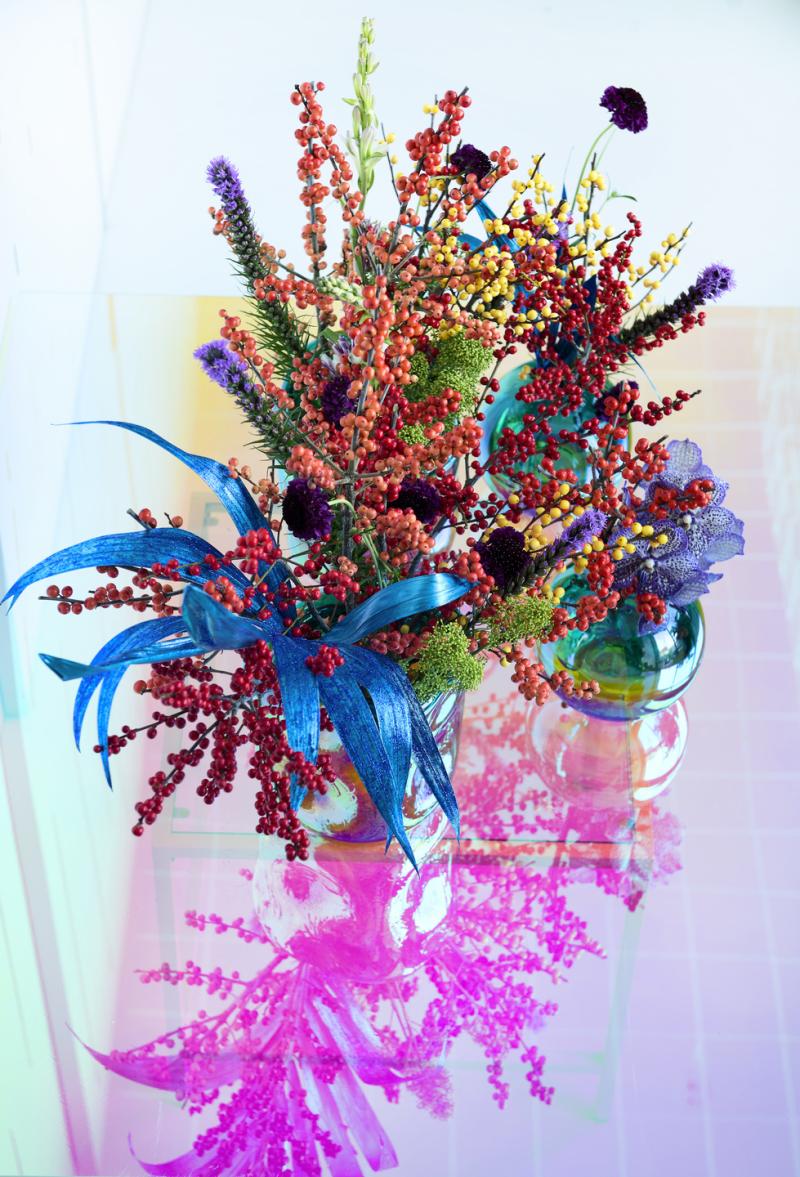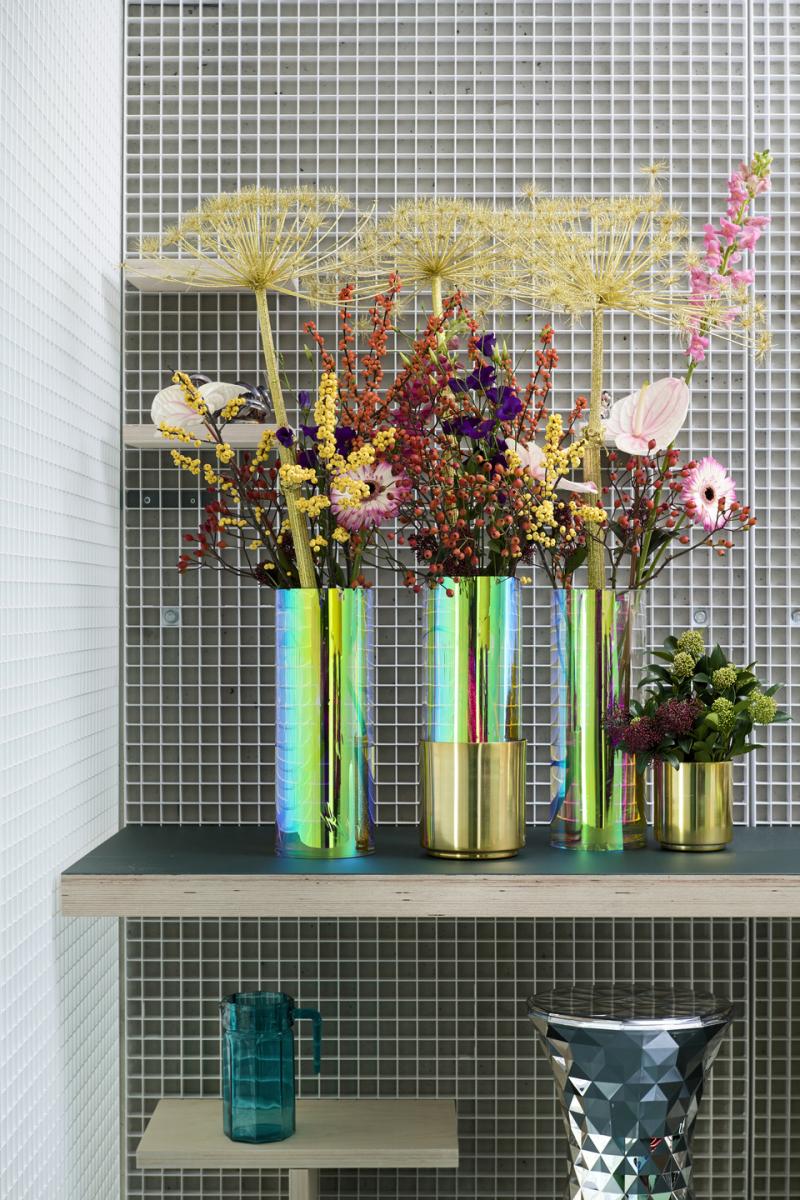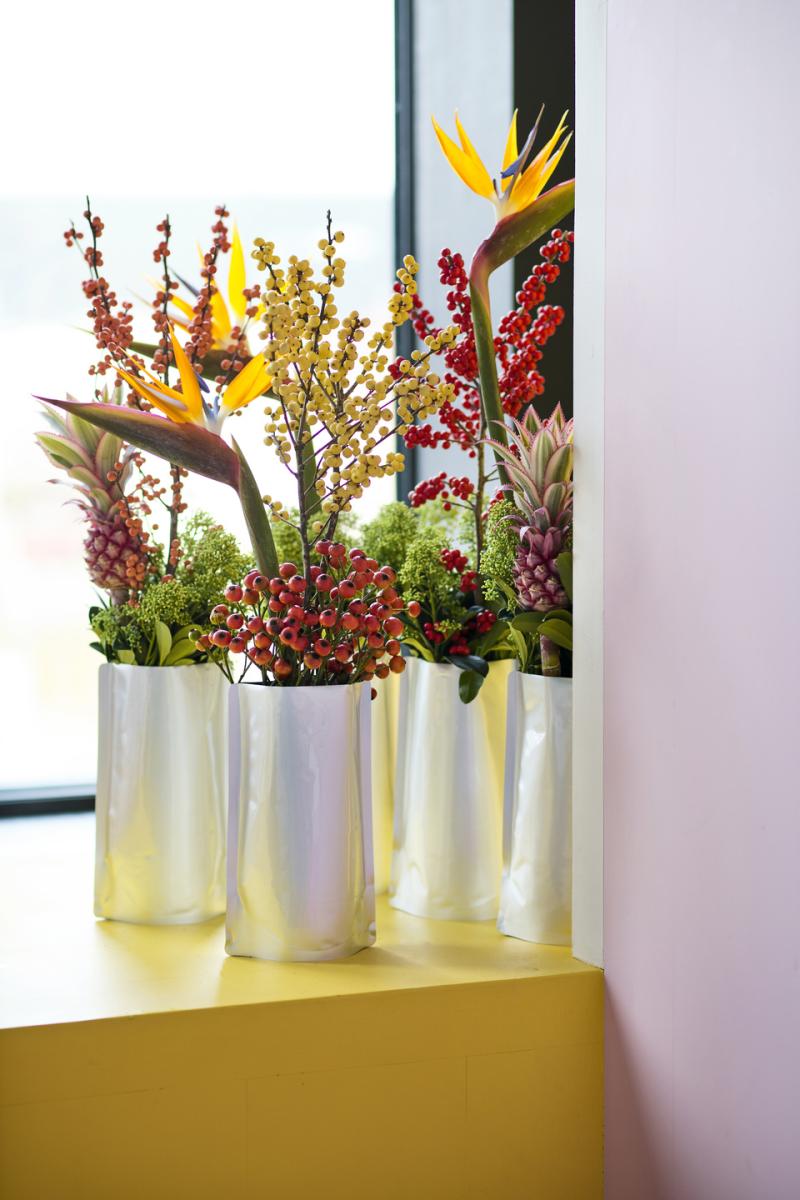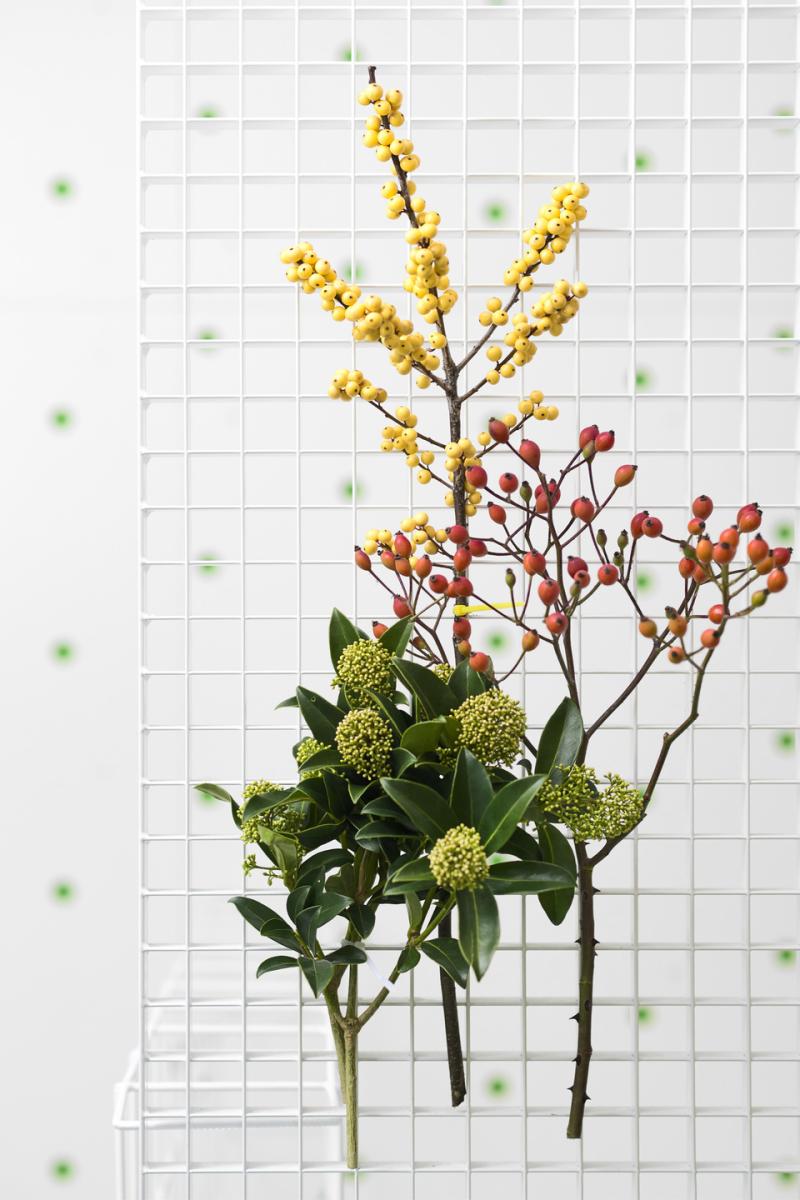Berries are on the Flower Agenda in November
Expressive branches, colourful berries: enjoy the fruit of the summer with berries as a feature in autumn bouquets and arrangements.
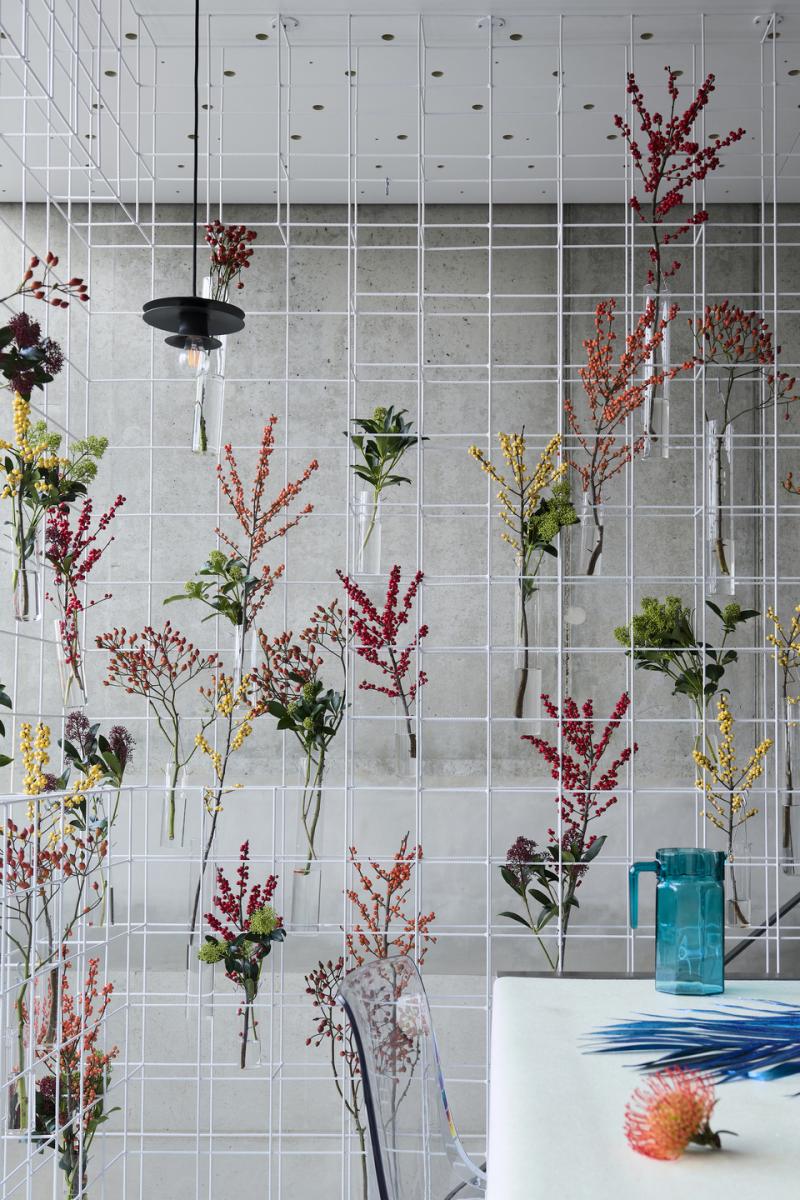
Origin
In the wild skimmia grows in the forests of China and other parts of Asia such as the Himalayas. Holly can be found in southern and western Europe and western Asia. Roses and their hips were first cultivated in China, Persia (the current Iran) and countries around the Mediterranean.
Range
Branches with fruit are sub-divided into two groups: fleshy and dry. Berry-bearing shrubs such as holly, rosehips and skimmia come under the fleshy fruit.
Holly, the most common variety of holly (Ilex) is Ilex verticillata, deciduous holly. This can be recognised by its long branches with small sidebranches packed with red berries. There are now also berries in other colours such as cream, lemon and ochre, orange and salmon.
Rosehips (Rosa) are available in a wide range with red, green or amber rosehips, the fleshy fruit of a rose. The hips can vary in size and shape, from tiny to a few centimetres. The length of the branches ranges from 30 cm up to 2 or even 2.5 metres. The XXL branches are usually offered in plastic bags in order to be able to transport them. 'Magical' and 'Fantasy' are the best-known rosehip series.
Skimmia is best-known for the varieties on which the red or greenish white buds offer decorative value. We also see attractive red or green varieties. Some skimmia varieties such as japonica and reevesiana are specially grown for the berries and work well as cut flowers thanks to the bright red berries and the green foliage.
What to look for when buying berries
- Berry shrubs are usually grown outdoors. This means they are less even or straight than most cut flowers, which offers extra possibilities for creative use.
- When buying look for the spread of berries along the branches, the length of the branches, whether branches have been topped or untopped and whether they are straight or curved. The quality of the berries is also important. Sometimes they’re damaged, discoloured or shriveled. Berries may also have dropped off by being stored too long.
- There are sometimes brown berries on the branches. This is the result of botrytis which is caused by too much moisture. Botrytis can easily germinate in damp conditions. During a particularly wet autumn branches with softer berries in particular can rapidly develop brown berries. It’s therefore important to keep the berries dry. Once there are brown berries on the branches, you should cut them off.
Care tips for professionals
- Process the berry shrubs as soon as they arrive in the shop by trimming the branches with a sharp, clean knife or secateurs and adding a preservative (shrub chryal) or a bleach tablet to the water.
- Some berries can be sprayed in moderation with leaf shine in order to give them a fresher look.
- If the berries are combined with other cut flowers this can affect the vase life of the flowers because of the ethylene given off by the berries.
- Berry shrubs and fruit can be stored in the cold store at 5°C. The cooler the better, but it does have to stay above 0°C. Rosehips can be stored for a time in a plastic bag in order to prevent the hips from drying out. Be careful of the thorns on rosehip branches - they can sometimes be sharp.
- All berry products have a long lifespan and are offered from the autumn up until Christmas.
- Berries are only for decoration and not for consumption.
Display tips for professionals
Berries are atmospheric team players in mixed designs, but also shine as a group act combined with moss, bark and autumn leaves. What is very Instagrammable is one bottle, one branch. The bottle can look like it’s come from a laboratory, and square and cube shapes also offer plenty of visual effect combined with the round berries.
Care tips for consumers
- Use a sharp and clean knife or secateurs to cut 3 to 5 cm off the stem.
- Remove the surplus leaves, sidebranches and berries so they’re not hanging in the water.
- Place the flowers in tap water in a clean vase.
- Be careful of berries that have fallen off - they can cause stains.
- Berries will continue to look good for 7 to 21 days.
Inspiration & information
Inspiring images of every flower on the Flower Agenda have been produced in line with the Horticulture Sector Trends 2019 (Groenbranche Trends 2019). These trends are a translation of the latest consumer trends and are specifically aimed at the horticulture sector for use both indoors and outdoors. If you would like to find out more about the Flower Agenda read more here.
Berries are on the Flower Agenda in November
You can download and use these inspiration images free of charge if you credit Funnyhowflowersdothat.co.uk.
Instagram: @howflowersdothat
Facebook: @funnyhowflowersdothat
Twitter: @flowersdothat

